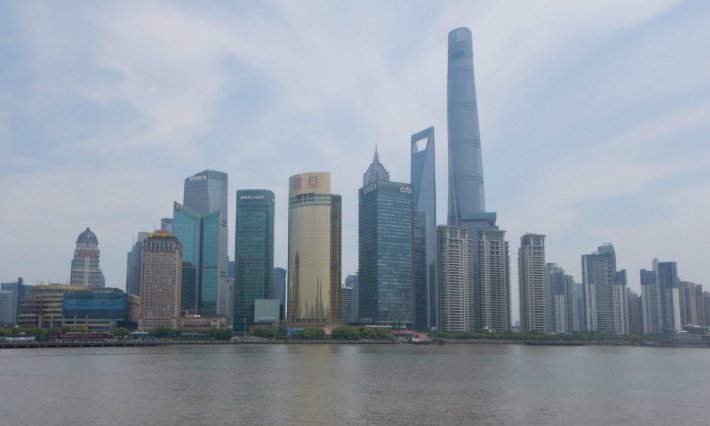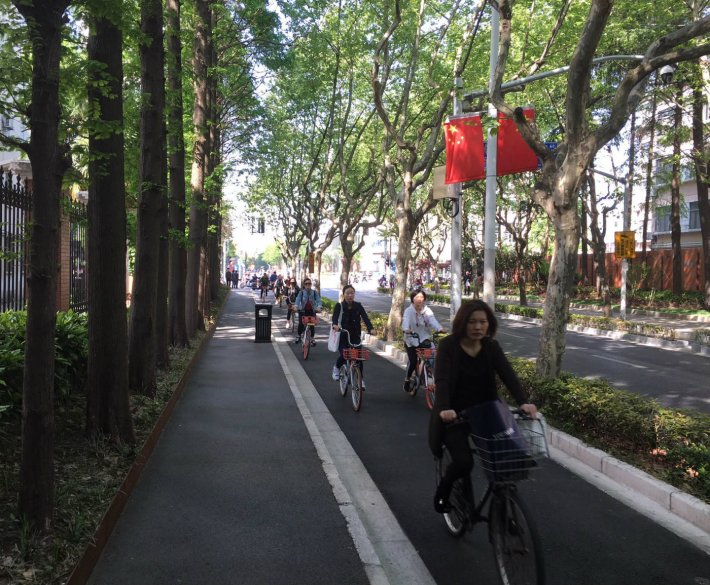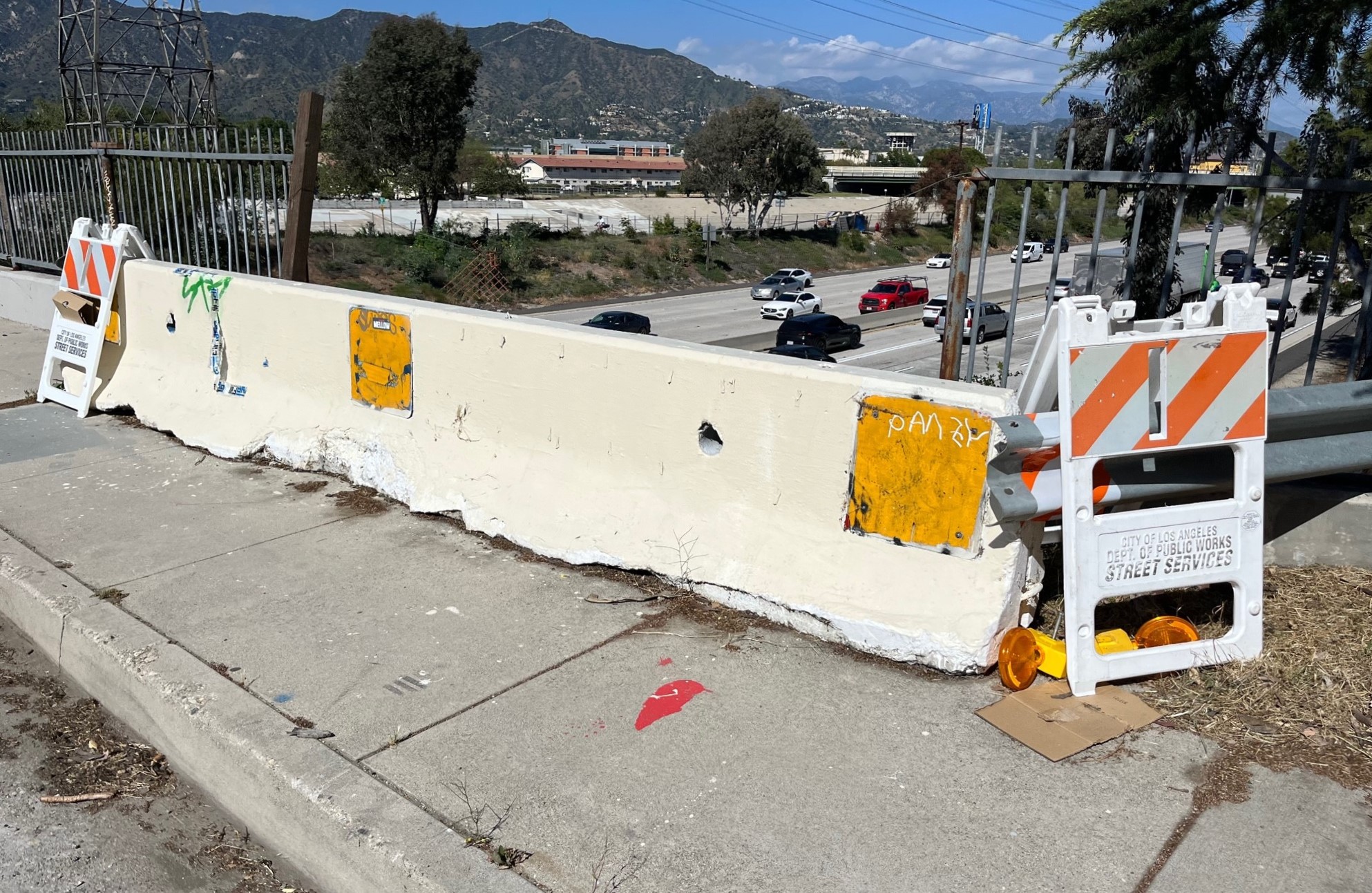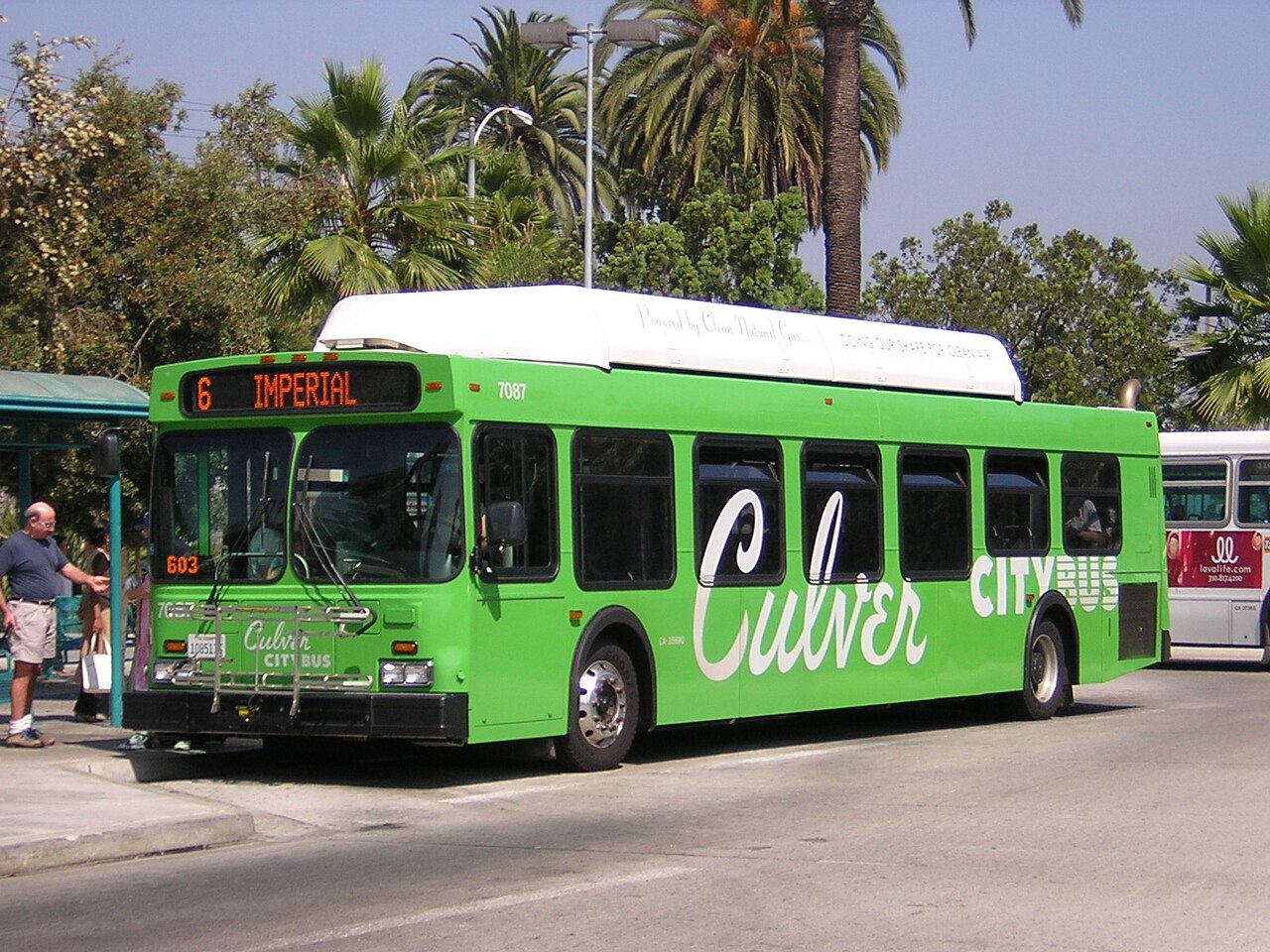Transit Lessons from Shanghai
2:14 PM PDT on May 2, 2018
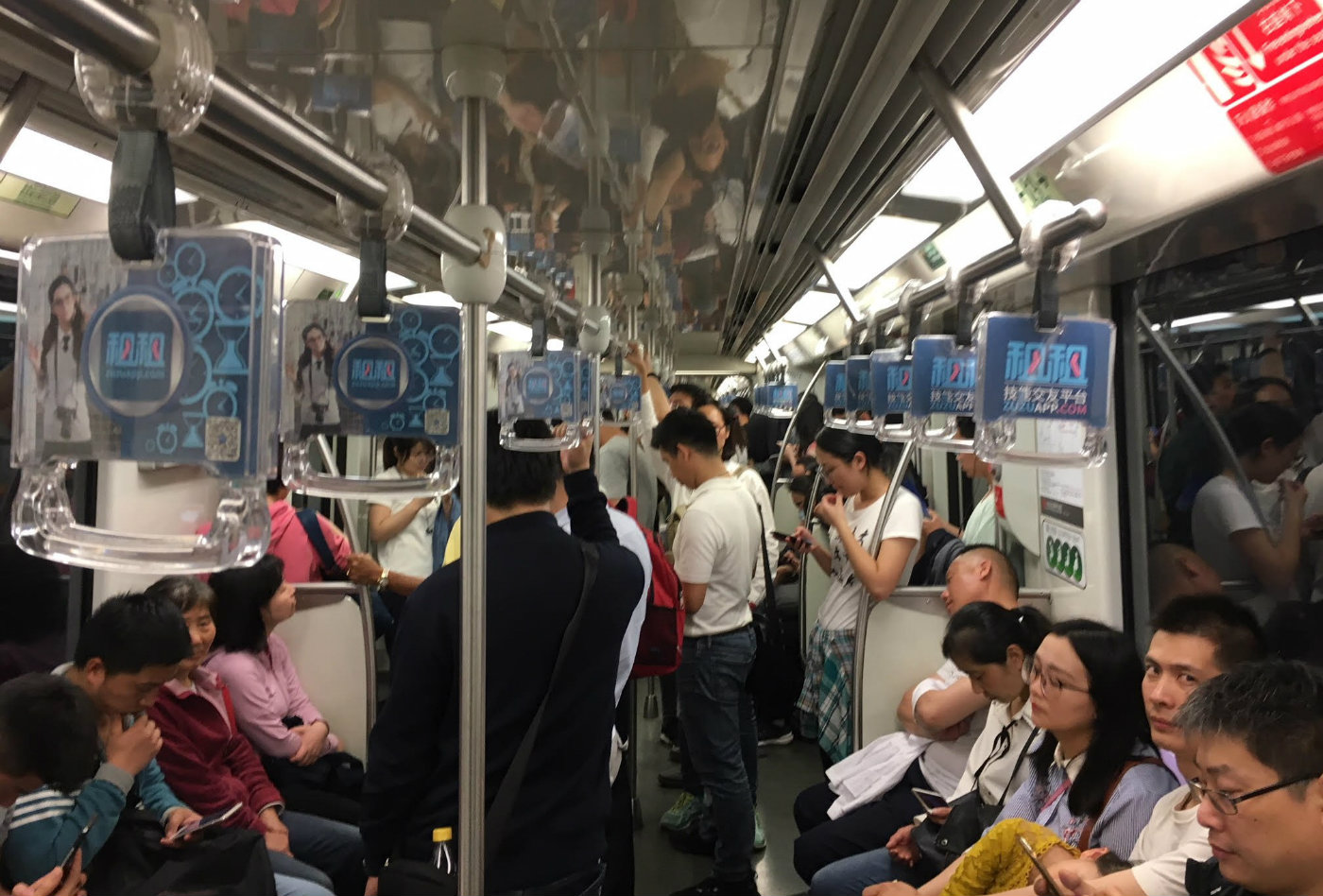
Transit riders in Shanhai. All photos by Ryan Snyder
A week and a half I spent in Shanghai produced some insights that can apply to transit planning in the United States.
UCLA Urban Planning professors recently released a paper (Falling Transit Ridership: California and Southern California, Michael Manville, Brian Taylor and Evelyn Bloomberg, for the Southern California Association of Governments, January 2018) that attributed much of our loss in transit ridership to transit riders buying cars, despite the significant investment we’ve made in public transit. These new drivers no longer depend on transit for their daily needs. But why would someone buy a car when they have been using transit? Why don’t more people who have cars abandon them in favor of transit? I believe this has much to do with the point-to-point flexibility that private vehicles offer. Transit can’t compete well with that. It’s the ends of the trip that make the difference.
I knew that to be the case in Los Angeles where a typical trip that can be made in a car in 30 minutes often takes 60 minutes by transit, whether it be by bus or train. But I thought that the dynamics might be reversed in a city like Shanghai.
By most accounts Shanghai is one of the three largest cities in the world and is certainly one of the densest. Miles and miles of high-rise buildings blanket Shanghai’s large footprint. Forty-story apartment buildings are a dime a dozen and the tallest skyscraper rises over 130 stories.
The streets and highways are congested. Many people don’t own cars. Parking is scarce. If there is an environment where transit should trump the car, this is it.
I enjoyed the freedom of using Shanghai’s expansive subway system as a daily means of getting around. Not having the burden of a car means freedom to me. I relish the buzz of thousands of people coming in and out of the stations and I’m fascinated with the people watching. I felt a certain smugness thinking of the greenhouse-gas-emitting people in cars stuck in traffic, where they could ride the subways and buses. Just for fun I wanted to see how much better off I was than them. So, I did some Google trip searches to see the comparison.
The trip from the Long Yang Road station where the Mag Lev line drops airport passengers off in Pudong to my hotel near my Mandarin class in Wujiaochang, just out of central Shanghai, took 57 minutes by subway, whereas a car/taxi would take 28 minutes. What? A singly-occupied vehicle on congested streets faster than traffic-avoiding subways? My trip from Wujiaochang to very central Yu Yuan along the same subway line #10 took 42 minutes by subway whereas a taxi would take 28 minutes. Come on! How about my trip from Wujiaochang to my hotel near the Zhenbei station where the conference I attended was held? Zhenbei is out of the center of Shanghai, but not far. The subway ride took 66 minutes. I could have done it by taxi in 30 minutes. Again, the taxi beat the subway.
After my conference was over I moved to a very central hotel along the Bund. This took place on a Friday afternoon just after 5 p.m. when rush hour traffic was at its peak. Surely, the subway would obliterate a taxi ride in these conditions! By subway 61 minutes and by taxi 45 minutes. Oops! OK, now I have a trip that a car/taxi can’t beat – the journey from my hotel in the central city to Shanghai Railway Station to board the high-speed train, also very central. Ha! No way would a taxi beat the subway in a city center-to-city center trip. Well, Google maps told me it would take 61 minutes on transit, and 25 minutes by taxi/car. A bicyclist would have made this 4.2-mile trip in about 30 minutes.
What is going on here?!
These comparisons defy my logic that in very urban areas public transit would be faster than a taxi or car because dedicated transit lines would avoid congestion. This is the same logic that transit planners have applied in many U.S. cities. Where transit services have dedicated right-of-way and land uses are dense enough to have stations or stops close to most origins and destinations, transit has its best chance to compete. But, transit loses any competitive edge to what happens at the ends of the trip, and with transfers.
With transit we need to add the journey to the transit station (5 minutes), the walk down the escalators (with subways - 2 minutes) and the wait for the next train or bus to come along (1 to 3 minutes where service is very frequent – more where it’s not). If we have to transfer we need to add another 5 to 10 minutes to the trip. Another 2 minutes to get out of the subway station, then the walk from the station/stop to our destination (another 5 minutes or so). The actual travel time on the bus or train can compete well with a car or taxi.
All the extra minutes outside the transit vehicle add up.
In cities without Shanghai’s ultra-dense urban form and ubiquitous subway system, transit competes even worse. I often run these same comparisons for my trips in Los Angeles. I live on Wilshire Boulevard, arguably the most transit-convenient street in L.A., so transit competes better here than in most other locations. I get the same results, only transit compares worse here than my Shanghai trips. This doesn’t mean that we should discard the principles of compact land use and high-quality transit. They are still valid. It means that these conditions provide the best environment for transit to compete well with door-to-door service. If someone starts their journey right next to a station and ends it right next to another station along the same line, they might be able to beat the car or taxi.
What are the lessons here for transit planning? We should incorporate the advantages of point-to-point flexibility in transportation planning. How does that play out?
- We are losing transit ridership because of the time advantages that cars offer with point-to-point service. No matter how much money we pour into fixed-route transit, it will always have a difficult time competing with point-to-point service as long as the door-to-door travel time difference is significant.
- People abandon transit and buy cars as soon as they can afford to because of the time advantages the point-to-point service that a car offers.
- Operating more buses along more streets will reduce the distance to and from transit, and the time waiting to board.
- Transit that mimics the point-to-point flexibility of the car has a better chance of competing than traditional fixed-route transit for many trips. By definition, fixed-route transit runs along one route. Most of our daily trips are not made along one route. We usually make several turns onto different streets and/or freeways to reach our destinations. We should broaden the definition of transit to include an array of options ranging from micro-buses to 2- and 3-person services like Lyft Line and uberPOOL. When the average vehicle occupancy is something on the order of 1.15, even getting two or three people into a vehicle helps achieve the goals of transit.
- Once autonomous vehicles offer shared-ride services from 2-person vehicles to 6-person vans to 12-passenger micro buses, we will be able to serve many more shared trips economically with flexible door-to-door rides. As more people enter the pool, more shared rides will run along convenient routes.
- Bicycles and walking offer even greater point-to-point flexibility than cars or taxis. To this list, we can now add e-bikes, electric scooters, skateboards, and more. If we can make these trips safe and convenient, more people will opt for these travel modes for the entire length of the trip, or for the first-and-last mile to transit. That will reduce the time difference at the ends of the trip for those taking transit.
- Financial incentives need to be part of our efforts. People who feel the real price of each trip they make, will often make different choices. Pricing on a per mile travelled basis, along with a greenhouse gas factor and a congestion factor can entice people out of their cars where other attractive choices are available. And certainly, we should stop subsidizing auto trips with free parking.
- Many people likely take transit in Shanghai because of cost savings and lower rates of auto ownership. Since the time difference between a car/taxi and transit isn’t as great as in most American cities, transit is still an attractive choice despite the time difference.
- Many people likely take bicycles in Shanghai because of the point-to-point advantages, and because of the low price and availability. Shanghai also has a network of protected bike lanes. For the masses of people who don’t own cars, the bicycle is the fastest way to go for many trips.
If we fail to grasp the principle of point-to-point flexibility in transit planning, we will be forever baffled as to why transit continues to lose ridership.
Ryan Snyder is a Principal consultant with Transpo Group and a member of the UCLA Urban Planning faculty. Follow Snyder on Twitter.
Stay in touch
Sign up for our free newsletter
More from Streetsblog Los Angeles
LAPD Was Crossing Against Red Light in Crash that Killed Pedestrian and Injured Six in Hollywood
The department says the officers had turned on their lights and sirens just before crossing. Their reasons for doing so remain unknown.
Freeway Drivers Keep Slamming into Bridge Railing in Griffith Park
Drivers keep smashing the Riverside Drive Bridge railing - plus a few other Griffith Park bike/walk updates
